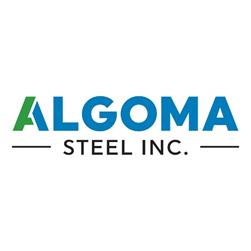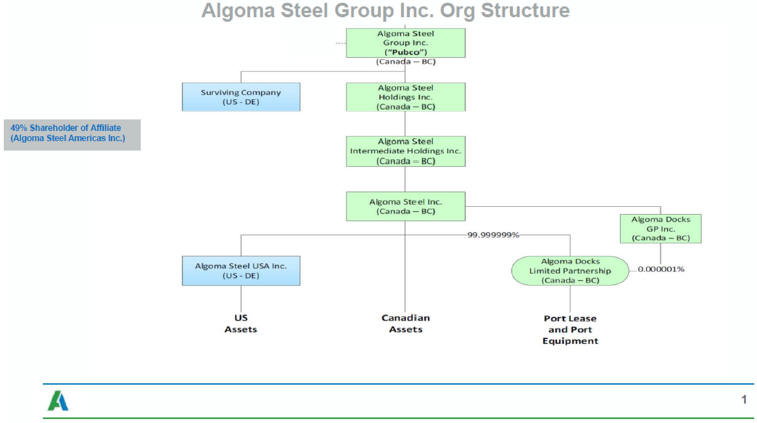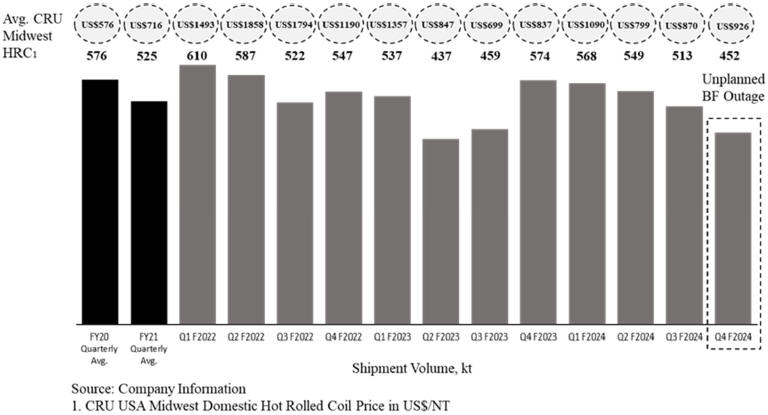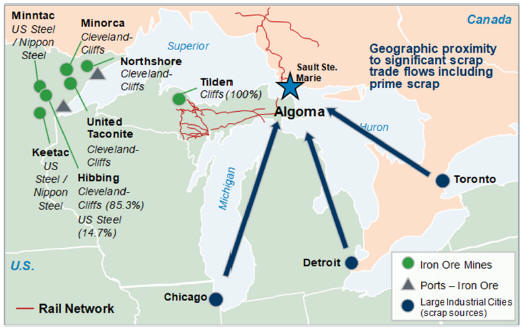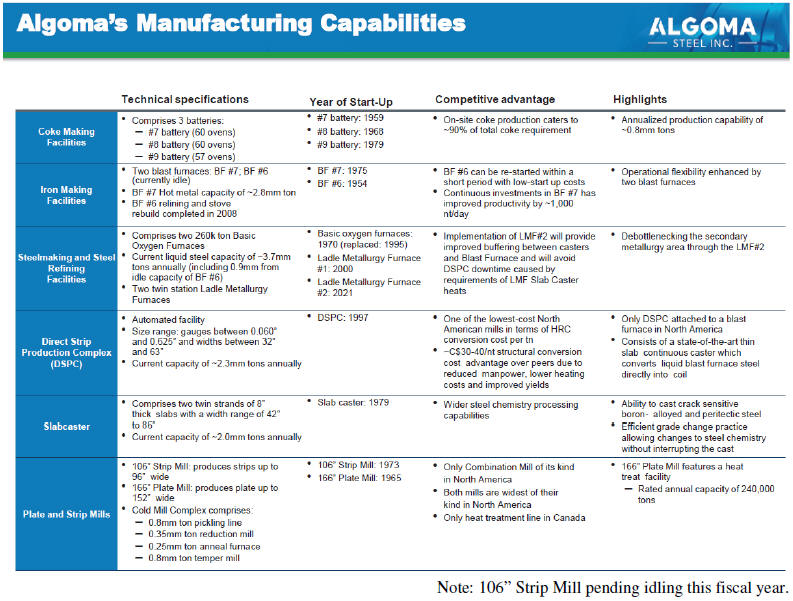H*#A(6&
MAXB)BI*3E)66EYB9FJ*CI*6FIZBIJK*SM+6VM[BYNL+#Q,7&Q\C)RM+3U-76
MU]C9VN+CY.7FY^CIZO+S]/7V]_CY^O_ !$( 4H""P,!$0 "$0$#$0'_V@ ,
M P$ A$#$0 _ /;=2OY[6:&&WB$CR MSV Q[CUI-J*NQI-NR*G]J:I_SZ1_F
M/_BJGVD"O9S#^U-4_P"?2/\ ,?\ Q5'M(![.8?VIJG_/I'^8_P#BJ/:0#VSF']J:I_SZ1_F/_BJ/:0#VSF']J:I_SZ1_F/_BJ/:0#VT@'LYA_:FJ?\ /I'^
M8_\ BJ/:0#VSF']J:I_SZ1_F/\ XJCVD ]G
M,/[4U3_GTC_,?_%4>T@'LYA_:FJ?\^D?YC_XJCVD ]G,/[4U3_GTC_,?_%4>
MT@'LYA_:FJ?\^D?YC_XJCVD ]G,/[4U3_GTC_,?_ !5'M(![.8?VIJG_ #Z1
M_F/_ (JCVD ]G,/[4U3_ )](_P Q_P#%4>T@'LYA_:FJ?\^D?YC_ .*H]I /
M9S#^T]4'_+I'^8_^*H]I /9S#^U-4_Y](_S'_P 51[2 >SF']J:I_P ^D?YC
M_P"*H]I /9S#^U-4_P"?2/\ ,?\ Q5'M(![.8?VIJG_/I'^8_P#BJ/:0#VSF']J:I_SZ1_F/_BJ/:0#VSF']J:I_SZ1_F/_BJ/:0#VT@'LYA_:FJ?\ /I'^
M8_\ BJ/:0#VSF']J:I_SZ1_F/\ XJCVD ]G
M,0ZMJ2E0;:(%C@9(Y/\ WU1[2 _93%_M35/^?2/\Q_\ %4>T@+VSF']J:I_SZ1_F/\ XJCVD ]G,/[4U3_GTC_,?_%4>T@'
MLYA_:FJ?\^D?YC_XJCVD ]G,/[4U3_GTC_,?_%4>T@'LYA_:FJ?\^D?YC_XJ
MCVD ]G,/[4U3_GTC_,?_ !5'M(![.8?VIJG_ #Z1_F/_ (JCVD ]G,/[4U3_
M )](_P Q_P#%4>T@'LYA_:FJ?\^D?YC_ .*H]I /9S#^U-4_Y](_S'_Q5'M(
M![.8?VIJG_/I'^8_^*H]I /9S#^U-4_Y](_S'_Q5'M(![.8?VIJG_/I'^8_^
M*H]I /9S%&HZJP)%I%P,GD?_ !5-3BQ.$D)_:FJ?\^D?YC_XJE[2 _9S#^U-
M4_Y](_S'_P 51[2 >SF']J:I_P ^D?YC_P"*H]I /9S#^U-4_P"?2/\ ,?\
MQ5'M(![.8?VIJG_/I'^8_P#BJ/:0#VSF']J:I_S
MZ1_F/_BJ/:0#VSF']J:I_SZ1_F/_BJ/:0#VT@'LYA_:FJ?\ /I'^8_\ BJ/:0#VSF']J:I_SZ1_F/\ XJCVD ]G,/[4U3_GTC_,?_%4>T@'LYC7UG4(
M0'FM4$>X D=LG']ZFIQ;LA.$DKLWZHDQ]3_Y"UI_UR?^:UG5^$TI?$FH>XI/J[!S>_RKM9H[=IQ#^Y1
MW4,H+9[YH4+[>?X"=1)*_D_O(T^(&GR7TMI'I^HLZ&=$?R1LE>($LBG/)P,U
M-O=YO*_R*YES\OG8KP_$>V3PYIVLWVDW]O!>=66,,L8S@$G(R#[<^U7[/WU"
M^]B54O%RMM7(83="$^1Y@&2F[UQ[8]ZE1NKCYTG8WJ
M@L* "@ H * "@ H * "@ H * "@!\0!E4-TS51M?4F5U%V+)8G.X _45W.*>
MYPJ36PW9'_SS_(U'LHFGMI#)(5V;D!&.HK&I2Y5=&M.KS.S(XD$C[2<5G&/,
M[&LI3%_M?G6_L4<_MV AC'4L:%10>W?8AD0QMCMV-<\HN+L=$9*2NAE
M24% %6YN;F*14@L6G!&2WF*JCVYY_2@TC&+5Y2L1QZS8-$'ENH8&'#1RR!60
M^A!-*Z*="HG9*_H-.NZ6.E]$W^[EOY4*:.Z\1$Q@R)# R[]IVH^X9 /3)'\J-V6XN%'7J_PL:U,Y@H *
M "@ H * "@ H * "@ H * "@ H * )(6VRC/0\&KB[,F2NAK*48J>QJ6K.Q2
M=U<;2 * "@ H * "@ H AN;JWLH&GN9DAB7JSG %7"$IOEBKLF=9SI/%G&Y#D9ISISIOEFK,FG5A57-!W1/69H% 2%!). .M,".">*Y
M@2>"021.,JR]"*\,V7B)H?MK2!8XI8MJ$8(D7:3TZC&17,
MM+VZ_P"=SJM>QDVWPZTJUTZ\LHKBY$=W8K8N25SM4D[NGWB6.:T=1O[T_N(C
M!1U]?Q-#_A$K+=(WGSY>\AO#R/OQJ HZ=#M&:GF::?K^(IXIY6=#4%!
M0!)" TJ@]!S5P5Y)$S=HL=(A-P0B]\_2G*+YK(F,ER:DS?>.*[5L<3W$H$*#
M@Y% +08(PEPC+]QCCZ5RN/)-'6I<\&.KJ.0* !E\Q-O?M6=2',C6G/E95((.
M",$5Q[':)2 * (VMX7?>T,;/_>*@F@I2DE9,>JJGW0%^@Q0)Z[E35)UALQNA
M68R.L2H_0EC@9]J&:4HWEH[6U^XI65I=Z':1P0HUY %&5# ,K=R,]0?3/%2D
MXFLYPKR7WENWN8KJ+S(6RN<$$$$'T(/0TS*47!V9+02% !0 4 % !0 4 % !0
M4 % !0!)"GF2A3TZU<%=V)F^57"=P\Q*].E$VF] @FHV9'4%!0 4 % !0 4
M% '.:^\4&M:7AA4Y4IQA\3M]W4\[&6C4IRG\*O
M?UZ%*_O[,VBRPVMW9QWT^&ECS'Y@4<$X!(![8&36M.G/FLVFXK;>U_PT,*M6
MGR\\8N*D[7VO;^NURG827=]:64=Q>W4<,-M+<2E9"'*EB%4GUP/K6M50IRDX
MQ5VTEZ]68T'4JQA&4G9NMMDB2[OYH-"TRTO9;T2/ 9C(CE=W'"%@"<]/Z
MTH4U*M.<$M';_@VV&ZLHX>$:C>NM_P DWJ[E"XO;TV,27MW>),MBC6XCW8E=
MCR6(ZXR!S6T:<.=\B5N;7R2[&#K5%3BJDG\-U;J_/T)VFDBU.SL;66[AFMYX
MK?87(0*!\QV@8(//).:A13A*I))IIOS_ ,]"I.4)1I1;3BXKR\WMK\V=IJ?_
M !Y-_OI_Z$*\>G\2/>J?"SI:ZCE,?4_^0M:?]ZI9WCVEYS/J#)!
M#YYB,L,8"LL;?PDD$Y%$5I&Z[O\ R_0&]96?9?/K^J-?0KN$Z%)QR\MWJ.GV\TISQ9BF$OG6]QN=55D4G
M]V1N' QU[U:CM'T3_4EM:R];%U?$FL0-/M+1J_?]=@3:?+VT_S_P" 36VI:[SI,TT=Z;Y3O&/
M,*A<=/N_*.*I.RLNS7WB:OOY?@1Q> M&BLS:JUSY9LVLCF09\MGWGMUSWIN;
M?X?AL)1M^/X[EB_\':7J+7;S&X62Y:%S)'+M:-H@0C(1T/-)2:V[M_>'*K6\
MK!8>#],TV>SGB:Y>>UEDF\V67>TKNNUFE/F?3M;]1"=*
MDU6YOC)> 7+,\MNMPPA9V7:7V>N*7-:/*4XWES$GAWPAIWAF262RFNY&EB2)
MC<3>9\J9V@<<8SCBJE-R5F2H)-,WZS+)DB!@9C][&16JA[KD9.=IJ(MK@.S'
MH!3I+459VB2XV#&@E69!0 4 .4@'!Z4FKE1=A#U.*9(
ME !0 V5/,7VIU6OH4;C^P;JPT^UN8[:2TNF"6D;Q_(QQD;1CC@5IRR8!&N
MUB#D9^AYI7:T+5GJ3)IVEPWCW:VMLES<#:T@10T@],]Z6MK!97N%GIFEV&V*
MSM+:#:2X6- N#T)X_*B[8))%ZI&% !0!REW<0SW.KR7^IW%L;:00V\5O*59/
ME!#!1]]F+< Y' &.M7&]E;=O]26]6GLC.?Q!JQN[B"T?"@/,)I6C (#>6%P[
M 90DX_O"FEI=_U?_@6L2W:UG_2M?YD]_P"*=7M%FC6VB,]NR^<,C:GF%50;
ML@8RS'/HM/E3>FVWY_HOO:!3=M>U_P /\QK>(-0M8U-_,H\EI'#Q['+ *% =
M4;'WW'&1TYQ2Y;O3^KO3]04NG];7?Z?>2Z?KNK7:7=JL\33I?QVT',O+3U_K[QIOFY7W>OI:YT7AZ:X?3K6UN8[HW$<">9/,O
MRR,0,X.>>:N:7,["A)\NOJ=&3M8 =!P*ZTK*QQN5W<;P!A5 %*,5'8
MW7840QJ>2S?I5*BEN0Z[Z$BA3E=B@$8(QUK3D26AFIR;5V4E4*H50 , #M7
M"=YFV#>3JFH6K?+ND$T8/=2HR1_P+-);F]17IQDO3^OD:=,YPH " 000"#P0
M:!F=Y,NF.3;0F6T;DPH?FC/JH/4'T_*EML;YZ?B:R4(IZE.O*VAF:YIEUJMY$J?)#;6K^0V0 DI*[<#M@+
M^M5S--RZZ?YLR5K*+V_X%CG[O3+]=%A6^M ;BYDD\R))!S)+(,J#G_GF&YII
MJ+26VG^;_(6K3?\ 6UE_F3Q61@UQ(I-#W6X##99?,68+GY@1G@@<
MX&<5FURN]^JU[VM^?ZG0IJ:=ET?RNW^7Z&Q8>';F+6-/U!K18W_TB6YD!!8L
MY&U<]2,9/I4I.VG9%N2O\SIB"#@C!K/8U$I 5=0NOL=E),J[I/NQK_>8\ ?G
M0W8SJSY(-K
M\OM!BB,]VMMY=H2P=X@1&0 Q*DCK\PZ=2:-5_7R+T8VTUS0=1^U".6#:=JSF
M5 BL2.%)/!..W44GM2;?4I)+86"RM;9
M%2WMH8E4Y4)&% .,9X]N*+MBY4A'TRRN3&LEE!+Y>=@:)3MSUQD<4XWOH#M;
M4T(H?*PS#!'0>E;TZ;O=G/4J*UHCZZ#F"@ H .!UZ4 <_P#VA=VUR[7,S[B'
M=(BBF*11]W8PYSTSGWKIY(M62[>J.9SE&5V^_HU_F6Y=4G-\UG;PQO(&5,LQ
M !*EF_(;?SJ%37+S-]RG4DI_RU\W:
M'QSMZ?A6+M?0W5[:CJ0PH * "@!0<$&@"M*AC<^AZ&N&47%GH0DI+0R[ME;6
MM/1"/,42,V.H7;W]LXK-[HZ8*U*3>VAHTS * "@ H 1E#*58 J1@@]#0-:&7
M+8I8203:?$Z$RJKQ(QV,IX/'08ZY]J5K;'1&HZB:J/IN:M,Y@H * "@ H *
M.>;LC&=22ER06I+
M-XKL=.LK.35P]CIXI^PXS4?&.A:5=O;75[MEC"E
MPL;.%ST!(& 3Z4X4*D]8H5
MN/2Q97Q=8W;Z?_9\LO'? QWJ?825^;M)])DU5=-CNB]R4#X6-BN
MTKN!W8P!COFCV,U%R:T0*M!M)/*-)#O#A%#-M&X@'!Z\=:N.&GS*,
MEN[?J0\1#E;B]E'X;N2UDOBLTHUS)#^L4
MT^5O4KWOCBR@MH[RU*7-H]M-/P'$A*$#&-O')YSC%4L/*[3WT_$/;QT:VU_
MLZ;XRTG4-,FO#,T7V:%9IT>-E* CJ,CD=>114P\X2MYV%2Q$9KL[7-^*198D
MD7.UP&&1@X/M7.URNS-XR4DFAU(93U/_ (\F_P!]/_0A6E/XD9U/A9TM=1RF
M'K/_ "$[3_KF_P#-:3V(D5ZS(*]_<2VFGW%Q#;M<2Q(66)>KD#H*&[#2N['.
M1>*+KR87,%M>B6=(@]LVSRS@EPZN<@J!^.:JR3^_[@L]?R"/X@:%)Y\AF"Q1
MQETDWH?,&X+T!RO)'WL=:5G:X^6SL:.C>++?4[B&.U0'?(\1T%Q*LD@*9 YI;!*5WIY)&. ,CZ5T4XV23_ *UN35J*
M[M_5C,31=1N9/]*2-E:92Q9Q]TREG/\ WRL8JN5:.^W_ 7^;9$:B2:?];+\
ME^)%JNA7<]I"+>R0W!EFD$B.H\IV;C>K<.A7J!D^E3&+5M>G_#HT=6.MOZ['
M:1RPPQ)&L>[: ./E QZ"GRJY'MFDDB8!7 :-@1Z$X(K-P?0WC6BUJ2P;5EV>
M8A)XP#R*TIQ<614J1DK(D(P<5TG,% !0 4 ! (P>E %%='T]5*BV&W:5 +,0
MH]%Y^7IVQ6GM9]S/V4%T(6T*S-RCB/;&NYBH=@6:
M7/+N5R1[?TQL6G6D"[8X0/F#Y+$DD=.2<\4.
MK2Q"G!0FM$*NK1H0+R":S). 90-I_P"!#(J+]RO8M_ [^G^1H"F8!0 4 % !
M0 4 % !0 4 % !0!R.L>';V;4[^33I+*6+4(D%U:W3,HRO"N"O/X5TTZB4%&
M5]'HT<]2$N?FCU5FNYC7'PWNA::I>&K_1['49))K,W=R;5PD3O*R[)/
MF=@W)7D$GI7;3KQE.-MDW^*V..5&482ONT;D/A^Y\07:2.U
MD+(D<8..>NX^]0IJG9).VOXE[6R_!W+37WNYT2I2=1R7=/[BUXWN+2&V1AG>-B%23^
M>:SJUO:1^;9=*C[-KR5C/T[PGK-O/I!NKFR>+18G2T$88-*2N 7X^7MTS6DZ
M\'S-+67X&<:$URQ;T3N5+?P)JMMI6J6*WEK(-1*3R,05V3!PS8P/NXZ5?UF'
M-!V?N_E;\R?J\TI:_$OQ-"+PC>)*27]VQ;H
M-W]4_N*MOX&ODC:.2Y@ :.]0E23CSFRO;MWHE7BU9+^7\!JBU*_FW]Y1NM!O
MKO7]#L9D(EC@6+47A1_(>%"&3YR!DD@#'O6T:L4IS6VZ[W,)4I6A#KM\OZ1Z
M57FGH[!0!3U/_CR;_?3_ -"%:4_B1G4^%G2UU'*8>L_\A.T_ZYO_ #6D]B)%
M>LR""\M1>VK0&66')!#Q-M92#D$?E1Y@C+/AFVDNUNY[F>:XW[W=M@\P;"F"
M H&,$] #[T^EO7\1W?Y?@5H- M7BGTIKBZ,5L(O)+%?W8!W*5PO)!7JV>E'.
MV_,A2O)K^M35MM*2WN8[EKB:>9$9 TA'\1!/ ^Z.E%QE^D,1F"*2Q [FF
M!2?7+6"*62&Y1Y(Q]Q6Y)[#\ZER21#J**;3V+&FB>TL@CR9E5YGF3?\\HAN;\A0Y):%.I&+MU(O,U.Z'[N-
M+-/63YW_ "' _.CWGY$WJ2VT-6TT^985625F_P!N3J?P%:1BS:,6EJSRU_%V
MM:5PN5',>R90\1XX!4Y'XUI12?(GN]?5?\ TFN7F:VM]S
ML;]IX^U.?68]T>G_ &&XO)K*.V5V-S&T8;YV'3!V],# (YI*3Y;]TWZ6[C<;
M/3HTOO[%.S\2^,;RY\(75S>:5;V>KSG=%'$X)4(3AB3U/8#OCK6B5II/M?\
M(B37*VNCM^/_ ";1/%7B&+4HX[HVUU875_>VT1=B)5,>YER?NA?EV_K41;Y
M+]>6_P")P5IH9Y;IV#NK"*0*3&01P>V?6ES[RMI9
M/S"UO=ZWL.\#?$#6/%&M^3=:2(;&>-Y(I$1AY6T\!B2=V?4 =*T@FXZBEH]#
MT>D(* "@ H * "@ H * "@ H CN/NH>V#7+6W.NALRA?7$=I8SSRKOCC0L5]
M?:L&[(ZJ<7*:BB/2[=[73XXW;+$S-")
M4,JC)0,-P'KBF'D24@&B6,N4#J6'!&>13 ;]HA$_D>=&)L;O+W#=CUQUQ0&Q
M("" 001ZBD 4 % !0 4 >9:W=W6C>*O$5Q::A,+QK>%HXFPPV$X=PN.=@R1Z
M=Z]"BHSI1C):7U_KS.*LW&JY+?ET_'_AS?\ "6I276K:A:V^JR:OID4<;)=R
M8)$ASN3( 
MY4EB11YTPD8!.F.G;O6DJ:O)I7>FGE;B;LKO4-+U36M6MK16URZ@/]C&
MZX[6+^ZU32!)/<%7F\._:)"@
M+-O7/..A]*2A&$I)+:2#GE.$;OI(;%=W.AQWMK:WK6UJKV2372HH:"-T)9L@
M?J>E4TIM-KK+\-B(MPB^7LOQW+6M>)&ATFQ@L_$=Q<^;),%O!MA#[0-JER#N
MQG^$?-41I\TFY0LTEI_P#24^6*4975_ZU&66J:SK45AG6Y[+M/OK_ %)TN;W2(I5B+ )*
M>=P QVZT5::A"<(K12"G-RG"4GT?YAXIUR]TKQ@B)K#>0&B"6D6 W)P?D8?O
M ?56XJ:TP\6WT%[K\VF&WGB6SM1&&%PA )
M)7&6R21P>*FG37LTXQYKWOY?Y#J3:FTYI7&KW@WZF]G&%
M9 L*"3^\1\O QN.<>E4H0;A%1Z7"4Y+GE?;3\BE:^);V?3](6_U^6S@>_N8)
MKJ-E8F-5!7+%<=_O8K7V4.9VC]E/YW,?:SY?B^U;Y6.Y\$W=YJ7A_P ZYN#=
M;9Y$AF88::,-A6QWR.]<>(II25E9VU1U4)MIINZOHSH,'T-
MI_\ 'DW^^G_H0K2G\2,ZGPLZ6NHY3#UG_D)VG_7-_P":TGL1(KUF0% !0!GY
M\OQ 1T$MM^JM_P#95.TC+:K\C0JC4* .0\=7D\-M!;QL520DL1WQVK&O)J-D
M<6,FXP274X6.1H9%DC.UU.01V-<:=M4>2FXNZ/7M-F>YTVWFD&'= 37I)W5S
MZ&+O%-GF_B/3;FSU:=W1C'(VY7QD&--*K<7MZ'B
MM%CY.XIN[]NW%:4:;>K-\'0;NY;'3>$M4L]76:&UBCMVC8_+@#*]C[UU^SY=
M$>DH17PG810QPCY!EO[QJU%(K8?[FJ YV^NO#]LUQ;3:>LT4,HN+DQVN](9/
MO;W..&[YZ]Z2MI;IL59Z^9*K>&8;^34&CT^"[ED-N;AT1'E; RH8\MU%-?RK
MJ#OOV+$EMH/V:VCEAL/(M&+0*P3;$R=2OH5]NE#=O>%;IW_X>]_LZ6UO7\TM)L*SL!U]&.!^E8/3
M1B5V[HV]&L=-^R6E_:VL29@"P$1!3'&V#M'H#QQ6ZBXMWW$K6)[31=+L+N6[
MM--M;>YF_P!9+%"JL_U('--*RLBF[N[+U @H * "@ H * "@ H * "@ (#(5
M/ ]?2HG'F5C2$^1W*.HZ<+S3YK=I,)(N"R]17+.DXK4[:-=*:DNA2M)KJ*[^
MQ7ACD;R_,CDC7;N4$ @C)P1D?G62[,Z)Q@X\\"\DB2%@C!BAVM@]#Z?K5&!Y
MY?:;KEGXDUB\TK3YIDN(I6_?(JLDFT &*4'.&Q]T],5<&N2S_K7^F1*_.FOZ
MT_I%%;3QA#IK;%U-]K721J7(?#1CRR0&QG\?>G%I-_]O?I8AJ3BK]H_J+J
MNAZE+XOU":RLYG@O(725ID7"GR2JO%(#N7)PI7ZFLU\#7]=/O1J_CB_3^OD5
MM%L?%-E?:;N2]2TMX8@(B"V5$9WHV7 R7'!()Z8.*VE*+E)^O_ _K[S&,9*,
M5MM_P3T:VE:>VBE>%X6=0QC?&Y">QQQFL6K.QO%W5R6I&% !0!Q5]XR.FZ]J
M\=YI$S6EA%'B5$4L=QQU)Z'/ ]C773H<]--/5LYIUN2I9K1*Y8O/&EGHL5L;
MG1[RUBFP7S&BB+)P,\\GOA-"#$K,PRFCOH36KJ*?*M5U[%74M0\+^(?%$.E2&[
M@N('>WCGMYA&I;^), Y]><8]Z=.%6%-S6J?3R%4G3E)0>Z?XE[Q-=7'ABRT?
M3M L5!GE%LK>4)-BXSMP6&2>O7UJ*?[Z"#6?U>=[7ZV_6Y?MX6O;I^6EB*]\=:-:+L%C+.
MJ&(1[$3:6D4L "2 " .V:U:.W
M=@LL W)C/&W(!Y]\'UK+D:J*#=]4:QFI0:)\26:R5_P#@E'3?%"2ZK':7]N)+F>_N+:WD
M2,818\'DDY[]JMT?<3B_LILGVMIM276R)#XPT^2U1;?2[FYEGN)HEMHXU+'R
MSAW(SC'ZU/L);WMHG]^Q3K15U;K;U.:M/$$-ZECK&K1%OL-K5?>KG.IJ=G+HV_N.GA\<:?'!>-/97=E]C@2<1RQ@%
MT8X4J >YP,<5SO#SNK.]W;YF\<1!K565K_(OZ+XL&KZG<6!LKRTN;>))72Y4
M#AN@X)I3I2A'GYKJ]@A4C.7)RVTN;VU9!\@VL/X?6L;*6QO=QW&^6_\ <;\J
M7*QW12U166R.01\Z=?\ >%7334D14:<6=)72KZ?*2 #YD9)]QG^E2_B1E+XXOU-!6##*D$>U6:BT@*&K:5!J
MUH8)\CN&'4&E**DK,B=.-2/+(X*?3M(TG4 EU>27!0Y,<:?S-:Z5
M"C/WY7\CO=*U*SU*U#VC95>-O0K72I*2NCTH3C47-%EUD5Q\R@_4519Q/C2Z
MO;@+IUC:3M".9&2,X/MQ6L%;5E69SFBKJ^C:I#>16%S\I^8>4W([U>@*Z/:[
M2Y6[M8YU! 89P1@CVI 34 <[%::S8S7MM:06XCNKIIQ=E_N*V,Y3&2PP0.W2
MA;)/I_G<;W;77_*QA77@W4+B^::?S)DN(FC=8KPPK&3(S-G .X$%>G]VE&*6
MGI_7W[##[VY2\".?*293;1)-M9H]X>3YOX22!_P!\BDDU9O>[
M_6WY@WT7;]$OT_$EE\/ZA9Z.HM5$=V3-,!<3^?\ O67:N21@\9SQCZT-I:?U
MJ[L$];OO^2T,[3O#U^VHM<:A&#"98F"2S"4A8UE0G;\?\ +_,B
M3NK?UO<>OA;6([*]5;*VN7O[5XLRR@"$O([-@8Y!5AT[K1"-XJ+\O^#^I=[/
MF]?^ =K86,UEO5KUYXIM.;7.E\OD]3-KS2M4N["2R\^Y1D5$C+,@/E;VQM0MVP,C\A6:2>WG^
M%O\ ,;;7X?C?_([&PNA?:?;W8B>+SHU?RY!AER,X/O3G'EDT.$N:*98J"@H
M* "@ H Y;6?![:K?WEPFI-!%>1Q++%Y(;)1@5(.1CITKII5_9I*U[.YA4H\[
MNGTL5/$_@VWU*[NM2N=86S@DC17\V%6";3QAB?E!/4#K5T*[A:*5WU
MRQ9>#(['7FOX[T?9O/>X%O\ 9TW!VZ@R=2O?%1[?W.5K6UOZ17L/?YK];FOJ
MND#4[C39C,8_L5P)P-N=^ 1CVZUE"?)?S37WFM2'.DNS3^XPH?!$UE%:MIVL
MO:W<"2Q--Y 8.CN7P5)Z@G@YK=XA2NI1T=OP5C+V#5G%V:;_ !'R> K!O[$5
M9G$>F$[E9<^>":7UF5Y.V_X">&7+%7V=_4BMO 8LM#;3[;4V5S[_I%^T\*I:^$;K01=LPN%D#3
M; I?.<+G@#/ S43KRW<T-KK)3EE*YQ^--XA-M
M..C25O07U=K6^M[D?;'XTJ=>S7^*XY4+JW]
MVPSP?I6M1:WJ&K:RLBO/!'"/-V!B5SDX0D <^M77G3]FH0[W,Z%.IS\T^UCM
M.G2N$[1V]O[Q_.G=A9%/4W?["PW'&]./^!"M*;?,C*HERG1UTG,8>L_\A.T_
MZYO_ #6D]B)%>LR H * /./%^J3SZL]J'*Q0= .,G'6N6M)\W*>5C*LN?D6R
M)/!NJ7*:HMFTC/#(#P3G::=";ORLK!U9.7(]CT.ND],;("8V"]<<4T"/';U)
M8KV=)@1('.[/UKSI)J3N?/U$U-J6YTO@-93J-PRD^6$&[ZYXK?#[L[<#>\NQ
MZ19Q!Y"[#*H._K79%79ZB+A )R0/RK48;5_NC\J % Z#% !0!SS7VJWK7\]
MG/:VEO9RM"BW"9$S+]XLV?D&>.,^M"V3?7_.P]+V_K:Y1NO$FJ2+-#I\-N]T
MTICBWL0HRX12>#GD.?H*E2O9?UU_1?B-JRO_ %T_5E:/QAJEC'%+J-E"ZW-P
MT4?ER[40*=O+E<;F.< X'O333LN^I+TN^W],Z620S2&0C&>WI6+W)O<:H4NH
M;.,\XH!&L$" 1K]U!C)K9:(L&78<%@/J<4706#!%,0E ";E#;D:/!-:
MZ)I]O<_Z^&WC23G/S!0#SWYK:;3DVC"*:BDR[4%!0 V26.''F,03V')J7)(-
M@BECE#[ V%[FA2N&AS_BW2_$-_8;_#FMMI]Y&/\ 5M&C1RCT)*D@^X_*FTGN
M--K8\8NM8\51QWFAZEK-Y;L^X7%M)#$"0W4@A>0?4&O1P^#P]6/NM^AY>+S#
M%TI>^EY,JV\]WIUS%=Z=>O97$*E!(@4_*<9!# C' _*O1Q&%A7BE+H>1A<94
MPTG*&MS<\)>'?$WB:Y6XM[X6^EAOWET]G /,^??B,;.?FYSTSZUX&(IT:;M2
MNVOT/I\+5KU5>LDD_OU/5H?".BVF<:3;[V"[Y#$,OAMP)P,?>&?K7![T=#TO
M=EJ376AZ7?&4W6GP3&5@TA= 2Q P"?PXJ%=;%-7-"&#:BQQ1A40 8 'I56
ME)BO&"L2FW<=-I^AJG2DB55B'V=QTVG\:/920*K$/L\GH/SI>SEV'[2/<46[
M<@LHQUYH5-MV$ZB2N*UL0F5)8^F*J5)Q1,:J;L>6^)M3GM_$NO0-KU]9RV\$
M365O!DI)*5^[C!SD]N]=E"E>FGRIN^OHHN>W,TK=!-1?59;3Q1>7&I7D<
MEEY");*V(U9D0MQ]2:VC2A%P22U;^ZYG[675+J2+7+Z(?V
MXMBD:L-BQLO) (//IZ5,*4.6*:6S?W$RJSNVF].7\3-U'6-?@TZVM_[4EBMH
M[NZA:[ED92=C80,ZJ3GKVYI1IPNFUJXIV_/0TE.:3BGHI-7_ "/0M GOYO"5
MM/?R[KPP$M(L9!)YP=I .>G&*X<0HQJ-1T1V8=R=-.6IY_I.O:XNGZTEOJ%U
MJ%U'9F19 2ZHV[!^5E!1L$_+STKMJ4Z;Y;JRNOZOU..G4GS22=]'_5C0DOS+
MIL,&D>)=3NEEOK>-YWSF,,#N57P,_3M4J'O^_%+1CYW[-\LG?3Y:_P!:%?4M
M9U&S\9V]G;:G>".VNH+=XYY20Z' +;0N"#G[Q/7I3I0C.GS-+6XJ\Y0GRQ;T
ML);ZQ?/K#"#6KZ741J[0K8G)B,&\[CC'0#OGBB-./)&\5;EU?F$YRYY6D[IZ
M+[CU2O,/2"@ H * "@ H * "@ H IZG_ ,>3?[Z?^A"M*?Q(SJ?"SI:ZCE,/
M6?\ D)VG_7-_YK2>Q$BO69 4 % '+^(O"PU*?[9!*(I,?/D<$5E4I*;NB.X\):U-JEM)%E6\DG2B-624
M*B",J)2!(H.X!_[W/-9IV=_ZT%=_UY[FMTH)'P@-.@(XSSSBA#10V<+W%S(%0/;*.39"LI). " %/US6?
MMX]#F^N4]HG00C4]5B$DES'91]TMOF?_ +Z/3\!6RYY;NQO:I+=V]"Y::7:6
M\U'4(SJBZE%96XN3%%;2(I1U#[/F
M;[VXX.,$8XZTXNR3?4U=M4NG]?<9DFO:Y=K%#9R0QR3./WKX&Q#O?@;3SL"]
M?[U+97O_ %9/]?P!VV7]:V_1A:>)M:M?L!OX8)5U!]RR%RL<0) 2/(3AB,D;
MN#T![54;-I?U_2^\4M$VOZ_K[CHUU&6;5;R.'!M[(*C@\&21AG&>P"D?B?:I
MB:3,./Q%J<]I:PL(HKR^O9(4:(;EAB3.2,_>/RXYXR?PI*_$&F:F99UCBM9(\0QE5(R57YN/GR&)R,>@&2:7-JX_UO\ U\Q)WBG_
M %_7Z&A;:P]QJ6EQQ7'VF"[MI7:1H]K%D*C)';J1BI2O?Y$6=KO>]CJK$_NI
M%]"#50*6Q8K0#QKXM:E!+XJL++:"]E;ER57+L\APJ#')X4G'O7=@^6$G4D]$
M>=F"G."I05VW^1R6M:+JVGV*IK.FRV,-ZA$,C$%>>BL1]UO8UVQQ=/$)TWI<
M\Z6"JX5QJK6VY[QX1U./6/"6EWL8"[X%5E48"LORL,=N0:\6UM#Z).ZNC;!(
MZ$BD,7>WK2L@NP.<99L#W-#<8E)2EL,W)_ST6H]K'N5[*78:TRKPHW>YK.5:
MVQI&CW&&X?L%7Z"LW5DS14HH2%MLJDG@\&I@[2N7-7C8M'<&;DXV@5U+XV7H8V5[ES ]*D88'I0 CQK(FS
M R.16=2',M#6G/E>I692APP(-<;36YVII[" =!B@+";0.,"@+"X&I_\ 'DW^^G_H0K2G\2,ZGPLZ6NHY3#UG_D)VG_7-_P":TGL1(KUF0% !
M0 C ,I!Z&F!P6I>"KO[8[V;(T+G(#'!6N65!MWB>;4P3AN^%=+33;:X0
MONN!)MEXQ@C^E:TXJ*L=.&IJG%Q6_4OZWJ\6C:>US)R>BKW)K:*NSJ2+FDW"
M:O:17%NP*.N2?2CE=[!8V&@B:V:V90T3J5<'^+/6M%%6L-I-6*&CRO&DNGS-
MF:T(0'^]'_ WYAZ$4"$[$D@
M=2>U%[ 4[JX5P(XR2HY)]:RD[B;*N*@04 % !0 4 % '+>.()Y-+C:($HCY<
M#TK*LFX:')C(MTM#SU5+,%4$D\ #O7$>.E?1'I^DZC/H-G8#45 @D7RV<9)5
ML=&]CV]Z]!2<$N8^IPM!U*5E\26W^7H==;SPWD"3VT@EB<9!4YKIC)-70I0E
M!VDK&;_PC&F+?FY\EQ(7:41^<4K*W**[O?0[&XLHK1D=8XF+
MH8Y&5E)SG# YYR?SHW!-H8_A[3'GMY?L^WR%5417(0A>5RH.#@],T[N]Q7TL
M2WNC66H&8W,;,TJJI8.05"MN&TC[O//'I4K0=[$=AHT%A=>:@&V.(0P*,_NT
MSD\GJ2>2?I3O_7Y">IKQ3/"3L(P>H(H3L"=BO^([G_ $K5;AODDD'$"@8 0=C@=:KF=K&%
MS=-K;ZE!/I]]"EQ:W*E9(Y!D&B+U&F5_"WAJ#PIITVFV<\DEF9VEA63EHPW)
M7/?G/YUJ!N4 % <$ ,H..F:EQ3W+C-QV$V1]T'X&I]E$I5I(:88ST)7]:AT
M5T-%7?43[.O:3'U%3[!]RO;KL'V<#_EJ/RI>Q8>W78F=]V .WZUTI6.9NXVF
M2% !0 4 !PR[6&1_*IE!2W+C-QV&""//WVQ]*Q]AYFWM_(@92K%3V-<[5G8Z
M4[JXE( H * "@ H * "@ H * "@ H IZG_QY-_OI_P"A"M*?Q(SJ?"SI:ZCE
M,/6?^0G:?]4#+%N@K*I5Y-%N'?%)U6>^*+Z\UC4SL@E^SQ?+&-AY]ZZHI)&YJ>!-7NM)
MOC97,4JVDYZE3A6IL%V/5A\PR.F,YI 8^J2?9;RWO[4>9(O[J8*,Y0G]2#S^
M=83=GS(RJ>[)31(S,[9=B2>YH++S7,4 $2JS;!@>AJ^:VA5TBG)/)+P[9'IV
MJ+W)N1T@"@ H * "@ H * &NJNA5E!![&F!S5Q=:;I++6VM)Y2@*QZ
M#.>_KTK)R4=;'91P"J2]R4;_ ->1HRZM83VVRZ2:&"48W2Q,@SZ9]?\ (IN2
M:U".&JPE>#3:[-,Y_1= Q Y/3/W>:SA.2>FJ/
M4Q.'ISIKF:C*W?2_;MY;Z'1QZT;@>9:V-W,N2 ^%49'U.:U4[[(\J6&Y':!5
M-]S#66Q")HFCWK(A3.-P88_.D'*T[6*DFLZ9"<27]NI]#(*7-%=3:.&K2V@_
MN$&LV)&1)(5]1"Y'YXI_R@#ZU.TK]D;PE^[<'U:^\=_P )
MC+=2>$)[22-;753)]I!4$C:F2,]L$&MFE&33VLW^1SI-POUND3Z=\1[.XU'2
MU_LG4$M-0N?(MKIE41R8S\W7(''I2BM5?32XVN6[[&E:?$C3KS48(UT^]33K
MFY^RPZBR 0R29QCKD D$ D8K2#YK+:^Q-9-
M4Y&5QM
M)!S0W:/,O0$O>Y2GI/CY-?MM62PTZ6+4-,4-);3.C;@1QAD)&>*M*ZOYV)?N
MNQRMG\:VN+V*WDTE(=[A"[S8"\]3Q70\,TKW.98A-VL>LVTPGMDE#HX89RAX
MKE.HEH$% !0 4 % !0 4 % !0!%<+RKXX(Y^ML_\A.T_ZYO_
M #6D]B)%>LR H * . \5:!>'4GO+>)I8Y.2%ZJ:YJM-M\R/-Q6'G*7/%7$\)
M:/<1ZR)KE&A,<>Y588+ \9HHP<97882C*$[RTT.YN['[?:O;J0KXW(3V8:-BQI^H6\^G02):J&8?.& R#W'YU4975RX3YHIEAKF+^"V3ZL*
MMS*YB)YY9!AG)'IVJ+DW9!-*EO!)-(<1QJ68XZ #)I-I*[&DV[(HPZ_IDATY
MO/RE_&9H,J0&15#$G/3@]ZJUFT^@EM?SL6Y_$NG^3-<0W-O)#&5#^6RR$9X&
M2?:X4X.=IQ^'!S4R5[7.K#2<>>4=TOU-(*H0( -
MH&,=L51RW=[F1)92V-_'<:;80B,1E955MK2#L ,8R#ZGO46L[Q1VQJQJTW&M
M)WOIUL3Z5$JQR30W#R0S.7VR+\RMGD$_I^%./D9XB3;49*S7;MT+TT,<\+Q2
MJ&1Q@@U5KG/&3@U);E.+1K",?-!YS?WIF,A_-LU*BD;RQ-5[.WII^0\Z3I[2
M;S9PYQC&T8_+I3Y5V)6(JI6YF68X8HAB.)$_W5 IVL9.4I;LAN;^VM&5)9,.
MWW44%F/X#FDVD7"C.:O%:%9VNM24P1:8"C=&NCMS[A1D_GBEK+2QO&,*3NYZ
M^7^>WYD7]E:GIJ1F[U:0VS,%/EJN8B>F2P;*]LGD9HY)1W9TW>1PT1SEB6SSGTIP7*GW(J593:T2MV0FE_"V>PN; P:A&=+L[J:X@MBI+J
MDB;2FXGU[U>KCKKHT3N].Z?W'+:+I>K7&K^&](B6^>UTR^:3R;G3VA,$8S]^
M3)5CV&/6JBN9W?9K\+?>3-634>K.RL/AOJ%J]G9RZNDFAV-W]K@L_)Q*6#;@
MK/G!4$GMFE&ZM)[K8"KGPYJ^H7]S=V,?K6B=DUYW,
MVM4^RLAU"74;JTN3#<2S&2)2/DP1R/SKHAB)1LF83P\97:.+T_7O%7
MPXU$6EY'(;4''E2'*,/]D]JV<*=97CN8*E8U(1L;4YRN5:Y3J"@ H * "@ H * "@ H * *>I_\>3?[Z?\ H0K2
MG\2,ZGPLZ6NHY3#UG_D)VG_7-_YK2>Q$BO69 4 % !3 S[L>3JEC<= VZ%OQ
M&1^JU#TDF92TG%_(U+0?:K*XMPVWS8V3/ID8J9+FBT.+Y9)G"6/A[Q%-%86M_9
M6MO#I5A-;121W&\W#-'L4XQ\HXSSZUI-\RD^K5@5HM+I>Y1;X?7EMI36VGV5
MO"TNG6T4P5P \Z2AG)]>!UJW)KQ6%E;11S
M:F+N,(Z#SX]I&TAE(&TG/((Y-9QT4?*_X[%)ZN_9?@7%\%ZG;^&]$MGL(-2-
ME+*\MA=7"["'! ^8*%^4G(&/I5-WE\K?\$E/1^MSK_!FCW&C^$=/T^\,,5Q"
MK!T5MP7+$@ ]^#1*SM;LOR%;5OS-X0$_<=&/H#4V'88R,APRE?J*!;#:0!0
M4 % &1J"71UNR,3QA/+<*)5++OXYP".=NZHE?F5CMHN"H3NNJV[?Y7L$MY?V
MEP(7DLYW9<@,_DD?GG/X47:=A1I4IQYDFOQ_RL2KJC&B0:?-YL>U]/N&!W*1B-V/7_=)/X&CX?0;7M8\K^-
M?BE^J-3Z59QE2YU*VM)%21F+'D[$+;1ZG'05+DD;PH3J*Z_R(ENKF]H-6U=6*C)Q::Z$,DBZ?9 XDD6)0 !\S
M' HV"3YFV>,ZK\4KVY\86\7D&TL(9MDB./G;M\WIBNI89VQ,
M&MXF4C!0$8KDCHCK'Y.,9-,0E !0 4 % !0!G:QH>G:[9M:ZA;)-&WJ.1]#5
M)N+NA-*2LSQ;Q-\--8\+W)U30)I9H(SN&P_O(_\ $5UPK1FN69R3HR@^:!M>
M#_B]\R6'B-=C#Y1< ?\ H0[5%3#M:P+IUT])GH$7B:*6"U*A6FFD(8*K;509
M.0W0G:/6I]CNULE_7XA[>UDUJW_7X%^;6(H3&OD2NSHCA5 S\QP!UZ_X&H5)
MN^I;K123MNK_ *?J(-8C#_-!(L>\Q^8<;=X!)7KGL1GIQ1[/3?S^0_:J]FO+
MYDMCJ2WKE/(EA;RUE DQRK=.AXZ=*)T^3KY!3JJ>RZ7+M9&H4 % "@!L*?7@
M^E3**DBX3<6579F8[FR17$VV]3N226@VI&% !0 4 % !0 4 % !0 ^)!(V"P
M4>]5%7=B92Y5<@U:%%T]\9!#)U/^T*ZHTE%W1RRJN2LSQE57N7[%^)P3&ZG*G
M!!]JLU3ZE37HI%W7,"YFMI/,4>H_B'XBIFNJZ&=9.W,MT6(I%FA25#E' 8'V
M--:EIIJZ'T#&N&:-E5MC$$!L9P?6A@M&>?6FJZ]IL^LS7>NQ7PLKD6D,%S$D
M"RLRJ0=R MGGH /=3U"VLH[+1[3:VC[V_4L7'CJ[COIVBTN)M-LYH;>YD-R/,#
MR 8V*,A@-PYSSVII:V?5V0-6C?K:X]_&.I1^(I;,Z7"=-BU%=/:X$Q\S>RA@
M=N,8YYYJ8JZU\_P":Y=O)_>8]GXXUK[7I*KJ>"?3#;!8A-'(HC5CMEFD08#G'H>14W"]APN''14]_E'-%QW#= _+*R'_ &>1^M&@:!L@
M_P">K>WR]/K1H&@;8!P9'/N%XHT#0R=8W:??V=X4:>W 9 $QP6QAN2!VQSZU
M$O=:9UT(\\)4T[/?[NGZD%[JMDL?EWUE+N)QY4L0.?QSM_'-)R75#I8>JW>E
M)>J?]/\ SC?6T,J+I=M+#<-_P LXC&\;#_: ? ^N14\R7PG5[<UW=T
M_EH9]YJ%O=Z?,EC9W<-R;N.L%S<@D94 \XXI1W(CN7#RDZ%
M>WTAP(8F8?7%-)MI(&[*YX9\--(37_$=[J.H0K/"BDLL@R&9O_K9KLQ,_9P4
M8G%17-)R9[O:2P06ZPC<@08'<8KSU/N=MT64FBD;:C_-Z$8S34DP'U0'*OX\
MTJV\62Z!=2>5*H&QV^Z2>V?6M/9RY>;H3SQ4N7J=2I# %3D'H1690M !0 4
M! (P1D4 <'XO^&.F>(@]S: 6=^>=ZCY7/N*VIUI0TZ&52E&?J>5>?XE^'UZ;
M.]A9[1LC8Q)1@1@E6['%=:Y*FL=SD:E3TEL>K>#_ !5H?B-U=;R4:@"K-%.P
M!^4$#&!C'S'I7/4YX:-:&]*,):WN]/PN=0VB02-)NFF,3%V6+(VHS9R1QG/)
MZYZU"JM6T_I%NBFV[_\ #]R[':QQ7,LZYWRA5.>@"YP!^9K-R;5C112=UZ$U
M24% !0 Y/OBA[#6Y3/4YZUYYZ(E( H * "@ H * "@!0">@S3 >(9",A#5*$
MGT)0]@/J::IR["=2*ZE?4]_\ 94@D&,,@!/\ O"MZ3ELSGJJ.Z-NK
M(,36?^0G:?\ 7-_YK2>Q$BO69 4 % !0 V1!)&T;=&!!H$U=6*FCK*=,@C=6
M,D8,9XZ[3C/Z5,-D12OR),T[K_CZD^O]*MFKW,C3/]&EN-/)_P!2V^/_ '&Y
M'Y'(J(Z>Z84_=;AV_(T:HV"@#*O/#>C7\%S#=:?'+'=2B:8,3\S@ !NO!P!T
MHVMY#YG>Y6E\%>&IK.*SDT>W-O"[/&G("D]<<]#W'2JN[W"[5R:7PKH,VIQ:
MC)I5NUY#MV2;<8V_=XZ'';(XH3:=T+IR]"PVB:8TCN;1"SW(NV.3S*!@/UZX
M%):?C^.X-WW(%\+:&K6;#38LV6X0KNS4I % !0 4 % "7B1WMC);2@@M&4
M##M[XH>JL:4Y\DU+L5[C2Q<,'GG>:V"!/+!* MW+8/-)QON:1J^S7N*SON5%
M\.:0EPTHL(>5"[-@VC'<#IGW]JGV<>Q;QN(<>7F?ZFUIT CD7RD5(X^P& *U
MBNQS78_&C6?LGAV#2T;#W\>#OL\GA
MBQELYY98GB5@)7W,.*X):2:9W1LXJQN4AA0 4 % !0!3U+2;+6+1[6^MDGB8
M7G#I_NGO77#$)^[,Y)X=K6 [
MPC\6[FP==/\ $2,Z+\OGX^=?]X45,/U@%/$=)GLMC?6VHVJ7-I,LL+C(93FN
M3;0Z_,L4@"@ H 4'# T 59!MD8>]<$M&>C'5(;4C"@ H * "@!Z1-)TX'J:N
M,'+8F4U'
MHQ:=96DDUX99$EC#K^Y1&*F1CV!(X'4U45S*_2U_^ .2Y79FG8^*O#]]>7%M
M'JD9>W1G?@@$+][:Q&&QWP3BDOAYN@^5IV92N_B1X>M=&N;ZUNGD@@*AUCC8
M2'<<*>0.#Z]*;NK E?1%J+Q7HLVIPZ>M[B[G4,B-&Z[LKNQDC&<GV6JW&M2"YN8S,85^:)U"EBBKVP.
M-WY]:MKENEKI_7X@O>WT_K^KE6QU[7WE2!+$RQP-]GDD<+\[A,'
MK2MUZ?U_7_#@DK:_U_2+4VMZ@/LS8$-U);H/LX7S097)/ 4\X5&/4#WHLKM+
M^N_W:"Z?UZ+[RM'XEU>XTE[F,6L?V>WGFED>,G.QRJ84-QG:W\1^M'V>9>7X
M_P!+[RDES1_6KQ<.6?,NHJ$KQMV/5R",$@C(S@]JR3N=(E @H
M* "@!0<9'8]:35U8:=G+_AOI/B9&N(E%M>X^
M69!PWU'>N^E6<=MCSZM%2WW/)PWBSX7ZGA@WV4MWR8I!_0UU_NZZ\SD_>4'Y
M'K7A+XB:3XG18BXMK[',,AZ_3UKEG2E#3_T(4P-RLS0P]9_Y"=I_P!!%L9(+NSNHX=1CO9;AYQ#_K8Y&):-AGGC ![8IK1*/2U
MF5*3;;]+>13TSX46FFR73RWHFMYXI8H%$;"6,/D$EMVT\'LHHWA9[_Y%.6J:
M(=/^&!LM&U&S.HQ&XNHTBCG6%OD"L&&X%SGD=L54I-V]4_N)32?E9K[R_P#\
M(5J4_B"#4[[7%N4AF$PB,&,'9L95.[Y5Y) 'ZTO=U\[_ (BN^5+T_ OZ!X8O
M-*@>SO-46\L$A,%O"+=4*)G/S-R6/;L/:AOF6NY,DI:=/\S9TN9WM/)E_P!=
M;L8G]\=#^(P:SB]+,BFVXV>Z+M4:&)#+X<2]E@A2T6>9C&^V+ D/==V,$^HS
MFFMM!NZU9(9M"CGCU';;B:?"I.(OF?(XYQGH.OI2VT!I_<206NBZGI\"Q6MM
M-:*2T2F+"CGD@$?7FGMJ*Y9FTVQN8VCGLX9$;&59 0<=/RH!.VPJ:=910-!'
M:0I$R["BQ@*5R3C'IDD_C0 W^R]/^V"\^Q0?:0O' [5LM
M!@ .,YY].U)NPQ*8@H * "@ ZG H I:[J$>C:+>7LC8$4+,?KBA+FT&WRJYX
M9\+[&35_%MUK%P-WD@N3_MM_];-=F*ER4U!'#07-)R9[57EG6% !0 4 174"
M75K+!(,I(I4CV(IIV=P/%O =T_A3XDOITYQ&SM W;/=3_GUKU*R]I24D\A2:-L[D<9K>E+[S"M'7;0\>\6_".ZL&;4O
M#;.R*=WD;L,O^Z:]"&(7PS/.GAVO>@5?"OQ5U'1)QIWB*.26)#M,C+B2/ZCO
M53H)ZP%"NX^[,]GTS5K'6+-+JPN$GA8<%3TKC::=F=:::NB^GWQ2>@T4V.6)
M'K7GL]%:(2D 4 211[SD_='6M(0YF14GRHL$\8' ]!78DEL<+;>XE,04 % !
M0 4 % %'5_\ D&O_ +R?^A"F!N5F:&'K/_(3M/\ KF_\UI/8B17K,@* "@ H
M JZG>R2:GI-E;OYIQTI+9-^?YZ!;5I;Z?\']#>TBX:ZTJWN#=
M+=>8NX3*FS>,\''8XZ^]#5B>I=I 9TO^B:Q%+_RSNQY;>SCE3^(R/RJ=I>IB
M_=FGW+TJL\+HK;&92 WH<=:U!>[_7];E1_##3?*MH=JF0[#$45?E*?Q(^2<@?*1R>:%+5OU_
MKT$_A2_KS.OJ "@ H * "@ H * "@ H *8&A;>7))),K$/CE3VJX[EKN3C&>
M>@Y-:/0"*!VD5IF(PWRJ!V -1'5W DJQ#))HH5!ED2,$X!9@*:3>PFTMQX((
M!!R.QH&%(!LLABA9QPW0?6ID[(>QYO\ &G6#9^&[?3E?][=N-V.ZCD_TKIPT
M;ROV,,1*T+=Q/A?I(T[PE%.RXENV,I^G0?H*RQ4^:I;L*C'E@CM:Y34* "@
MH * /%OBE8-I7BJTU>W!7S@&R/[ZG_\ 57J867-!Q9R5URR4D>S^&M275-)M
M[E#\D\0D'L:X;T?-4YCQ5X+T?Q3 3-;B"Z ^6>/AA
M]?6NBGBY0>ASU,)&:U/'[K3_ !/\--4\^VE8VY/^L4$QN/1AV->G"=/$+S/,
ME"IAGY'J/A#XG:?XCB%KNC.Q'3BO,/
M2"@ I@7"H3Y%& *[8145H<$Y.3U$JR H * "@ H * "@"CJ__(-?_>3_ -"%
M,#Q$BO69 4 % $5QE.VHT^A7?0=.9852W:'R RQF&5XV )
MR1N4@G)Y.>M%PN6K6&WM85M+942.%0HC4_=':B]Q;$HD0R-&'4NH!90>1GID
M4 5=4U"TTG39M0OFVVUN-[L%W$(G#Y4X;"GDCWI=+@U9V9':>
M(M*OM-:_MKM)(DC,C*"-ZJ,\E>HZ=Z>RN.S4N4M+JE@TJ0_;;<3/C;$95#G(
MR!MSGI19WL3TN/:_LX[C[.]W L^0/+,BAN>G&<\T+78>Q8I % !0 4 % !0
M4 % !0!IP0K F,$NPYYK:,;:E[#I P@DP<';1+8!EN"+6,$8//%$-A="2J Y
M_P 17$,4MMO92T>6*O;&9.<@9QTZ''TKIH1;3M^=CDQ$DFK]/*Y>T(0G35D@
MBBB1V)Q"Y9/J,]/I45;\UF:T+YXA\1+QO$WQ&BTNW):.%EMUQ[]37J4%[.ES,Y:SYZBBCV6SMDL[.&V
MB4*D2!5 [ "O,;N[G5L35(!0 4 % !0!Q?Q.TDZEX2EE1C2Z=(W[RV)"C_ &3R/ZUIB8\M3F[AAY7C;L>H5B;A
M0 4 % !0 9.!0!!,VZ4XZ#@5PS=Y'?!"XB66)QA
ME89!JHR<7="E%25F>4>+/A,49K[PZVU@=QMB<8_W3VKU*&-O[M0\NO@K>]3#
MX>^*_$;:P- U"V>X$8.YY?E>(#U]:,51IK75W!96[W%S*
MD42#+,QP!7EQBY.R/4E)15V8VE>//#.HZ@+6#4HS-G"AN Q]C74L+..LD*UND96;(K/4;'4 YL;VWN@GWO(E5]O
MUP>*!%F@ H 1W6)"\C!$49+,< 4 *.1D=* "@ H HZO_ ,@U_P#>3_T(4P-R
MLS0P]9_Y"=I_US?^:TGL1(KUF0% !0!@>) "UFVV[C>)S)%<6\'GA&QC#( 2
M003SC\10M'+=+N-;\)ZEIEIM\^XBV)N;:,Y!Z]NE3
MU7JBH/E=SE;_ , W237PTZ1Y(KBV@0&ZNFD;>DP=N6S@;1^=7&5I)ONG^8K^
MZEUL_P 411^"-5;Q*+EK33X85U1[[[:CDW#(>D9&.GXU,/=2OT3^=QS=TTNM
MOE8IV7P_UI+22%[/3;62.QN8!+!(2]RTO3?QP!^-'3[OPL6YKGOYW_X!IR^!
M+F2XN+LVUJ;LW5E)#,3\R)$JAP#CCH>.]6I6E?S;^\R^QR^5OGN3U%9K5DK
M5F@3DYK88A( R3@4P.3UV[D$]U-M0);%$RDH2;GN V5*_,?UKLHQ5DN_W'GU
MYN[?;[_\C=T>2)]-C$(D 0E6$OW@VTI*2.2E^[J\I]!UPG:%
M !0 4 % !NV*S>@X^M14?+$TIQYI%2N$[@H * "@ H * (5M8$N6N%A03,-I
M<#DBJYG:PN5)W/+?C3=W<=MIUJA86LA9GQT+#H#^M>GE\5J^IYF82:LNAX\K
M%&#*2"#D$=J]0\E:'T_X7#:UX%L!JT"7!F@'F),@8/Z9!KQZL5[R1[%.3LFS
M@;70K_2O#7AT?V7J5O8$S?VG%I:>5=.VX^46VX8@5+W5^RMZZ7N:=96[_AY&
MMI.D>);S4]..IS:C&]OIC2)F9E1IO-/EB7;PS!<9'YTY(%6\_=:XD@TV5;TWSDK)=?PF'GZ_=XQBIG_#ER[6T[W''XX\W
M?7M8SM0\-:V_AW4;-FUF[6;1[:X9))9&)N0_SJ/?;_#53LK^4E]W4F&R?5J7
M_ +EU;:^=6Q:P>(!=%K7R_$5ER
M>5M.]_\ A_P/62"#@CF@0C,J#YW5?J>:3DD!GZK/"VGNJODEDQQ_M"A23T#0
MWZDT,/6?^0G:?]
M)-($BJERSHX0AUB8JHQ:LM2MM0,JV[/NB(#JZ%",C(.".A'0T[-$#M0O8M-T^>\F#&
M.!"Y"C)..P]Z3OT&E.5D5XRH!55!+$L0.I(P
M.3CI0U;?^M; E?8LW7B6VM953R;B2+]T7E51L02'"YR0>O8<\T6UL^]OF):J
MZ[7^15_X2CSM8TZQM+*5XKR1PMPP&QD1269<'/7 Y SGBB*O]U_\AR7*M?0Z
M*D(* "@ H * "@ H OV,>(VD/?CZ"M(Z:E)%:>X:8XZ(#P*ENXFR:R1=K2=7
M!Q]*J"&BU6@$-W+#!:N]P"8<8;Y2W!]AVJHIMV1,FHQO+8YJQB;4[J&^%NI@
M<,59669%]B&Y4_3BNJ;Y$XWU^XXJ:]I)3MI]_P#PQTT%O%;1^7"@1=?%G5?L?AI+)&Q)=N%(_V1R?Z5U82%
MYW[&%:5H6[ECX6Z2-/\ "27#+B2\8RG/IT'Z?SJ<5/FG;L.C'E@CMZY34* "
M@ H * "@ H \:^+.FMHWBVSU:W4KYZ*^?]MI;L4&,?_6IB"@ H 20;
MH6 [Z,\J1P5/J*U
MI594I7B95:4:L;2..TKX,:1;WJW%Q>S7,49SY+ 'TSBO16,E45EH>>\'&F[
MO4].BC2&)8XU"HHP .PK(L=0 C,L?^L8)]>M)M(97>]121&F[W/^%0Y]A7(&
MNYVX\P@>W%3=BNR-I'?[SL?J:0KDD=W-$ %?@>HIW:'=HB8EF+$Y)I"*M_\
M\>O_ -/_0A3CN".MJS8P]9_Y"=I_P!&VU"/4_
M],,4UV\;12*G,.Q< =>>K>GWJ+6^_P#X'Y%'P[?6^M0M8WJ01)
M&W[V2+>/FVK@#(Y"H.??I5Z2O?\ K6_^7W"B[67]:?\ #L9;>$[N)[BUGN#'
MIK3J1$4S)(L8 4[\]"1D\=^U+2VO]=ON5AMM?U\W^+8J>$93;06T^H[X;5!%
M;JL6W";@3NY^9B%QG@_]?\ 3>]O/\?\ AV;MG8"UN[ZXW[GNI0YX
MQM 4*!^GZTEHK">Y)>V<5_8S6DX/E3*4;:<''L?6D"=B@NA*\R37=]<74B%=
MI?: %4AL8 Y(&3UXIL+Z6&6OAR&ULYK1;J5H&B,4:E$'EJ?0@9)'J: RSRW4%O"T$-O,JF-$8@XQCD\ 9/:CF[[C;O^
M9MPPQ6T*PP1)%$@PJ(H 'T I$CZ0PH * "@ H * %!(& 2!3 2D!XGN>%?$"
MZ?Q%X]@TJ [EA*P#'J3DG_/I7IX=>SII * "@ H * "@"Q#:-*@/-!F1\'=?,OAN?3G^:2UD^3)Z*>?\:,4N65UU(P\[PM
MV._EE:9]S]?:N)NYLWFG8:=B]TK884 *#@\].AH:NK#3L
M[E5UV.5]*X&K.QZ$7=7&U(PH * "@ H * "@"XI55PC+C&,\5V0<$CCFIMZC
M2Z)U;)]!1*K%;!&E)[C9)-UI(R$HR^AJ5/F0JD.38S223DDD^]!@)2 * "@
MH * *U__ ,>O_ T_]"%5'<$=;5FQAZS_ ,A.T_ZYO_-:3V(D5ZS("@ H CF?
MRX)'W(A520SG"@^_M2=[: MSC'U?7+: PR7+1ZFPC0PW42E"SN%WQ,F,KUX.
M3TS6EDWI_6_YV&]-?7^OQ+T/C6[CAENI=*EETM5?#")P9:LM3U*^N(;66V>UF>=0K&%D#IM+, 'YR,8S[TTE?[R6M-#?Z
M<=*D1GZY>2Z=H=[>0!?-AB++NZ ^I]AU_"EY>@UN8MRJV0,-KK-U+>SQ(&#R
MEP2[ !QV3J< 8!'TJM$[/;^OT"[:YC*N9]7OF,T.JO;*VQ(D56/,S'!/SW)YXJ5[VG=
MV_S'M]U_\BE;M?7.GW%@FH>1,U\8D$UT[$*B@NJRC#-R,]LF?44GK;SM_F+X6_(YZ8:L
MUA,T%_/%';7KQ*ANFDD+84*%;&9.=WRG YYZ41E;E;_K7_+K\RFMTOZT_K0M
M6WB":[T6\E62=;Y9HG&N.:I+6/J2]&_1_A_P3M:D04A
MA0 4 % !0 4 7[2-HX2S<;R,#VK6"*6B)ZL#G/$,MC)>00&[FMM209A,8?#
M]1QUZ?A7714TF[71Q8AP9E*O(YW;HA&W'KC /UP*SK?%8
MUPZ]V_Z6-H4<5M'8LBO+1;ZRGM776=84@-2(YMXCG/RUM'8KH.J@"@"*X'SJ
M?45QU5:1VT7[I#61J% !0 4 % !0 4 % !0 ]/F5HCR&_GVK2F[.QE5C>-RF
M\;Q$!UP36QP-6&T@"@ H * "@"M?_P#'K_P-/_0A51W!'6U9L8>L_P#(3M/^
MN;_S6D]B)%>LR H * &2Q1SPO%*BO&X*LK#((/:BUP3L9T?AS28X]BVF1N5P
M6D=F!4Y7#$Y 'H#BJN]PO<>FA:9&]PPLTS< B0$D@@]0 3@9[XQ4]+!?6Y)9
MZ38V!1K:W",A)5BQ9LD8/)))XXYIW TOM,W=L^Q -%QW82QK)#YBJN,8=>P_
M#TH>P>:*$-AI]NFR"TMHD8[L)&H!/KQWH?9B');V;@&.&!@K @JH."!@'Z@4
M:AY"16UE;7+O#!!%<2\N4159_=^QSUY
MMZ/?IJFCVE[&QGSR[ANQT"CZ 4^6*Z"YGW(+Q=\&\YW*<9J9HE
M[&?61(4 % !0 4 5K_\ X]?^!I_Z$*J.X(ZVK-C#UG_D)VG_ %S?^:TGL1(K
MUF0% !0 4 % !0 4 % &?KTMS%X&20?P?*..^[WQ4IVCIY_TRVK[^11LGU9([*TAU"2!3!$\1
M?S6:5W)+D@ [L'@@\#K[U:24K=OR_KJ2WI?U^\T9+[6#K]XQO/+^SS,4M@DA
MS$J\< ;3NZ[L]>/:H7P_?_P/ZZC=KV]/^"=3I%L;/1[.W/WDB4'/KCG]::#,SX1ZS]KT6;3)&^>T;*_[I_\ KYJ\7"TN;N30E>%NQZ-7
M$;DD#!)XV/0,*:!;FF1@D5N6(=J@%F %3*:CN5&#EL5Y'\QR>W8>E<4I@%#=E<$KZ(
MSD\26\<]A&/.6>_.(5VY.W!.YO0$#/-59WL/97+:ZQ!=ZP-)4-)=*AD:0 !4
M Q\I/KR.*%[U_('T*6HZS-IU[#:MITTJROM5DE3L,L=I.< =:2\PMH5=,\6V
MNK,J6]O-YDC@(A*DE2-V\X/ ZYY&0.].PGH:\5ZDM]<68#"2!4D:+>7TA 6&)FY^E-+F=@;Y5<\-^%]B^K^+[K5YP6\D%\G^^Q_PS77BIUUY9UA0 4 % !0 4 % !0 4 % $5S ES:RP2#*2*5(^M-.SN!X=
MX1F?PK\1VT^4XC:1K=L^A^Z?Y?G7JUE[6CS(XZ?N5.4]VKR3L"@#2AF1X%9L
M@CY?7I5^T45J:P@Y[$56&5)04 % !0 4 % %B&/RP
M';[QZ#TKII4^K.:K4^RA]=!S!0 H&3@4 5;FY 4QQ-DG[Q_I6OX(4+R/$0$7JWJ!]1Q36Z]5^8+R)I+1I
MKRRGW!8[<,=A'.X@ '\!G\Z?5BZ)%"P\/QZ5J6_,X_[YHV3\_Z
M_P PEK8YN]\(7-Q=I<0W<4!,C%E0%50;@5V 8Y !Z]2Q/I1'2U_Z_K;_ (<;
M::?]?UW-O3K>9M3O]0F0H)BL42,,$(F>3]2S'Z8H6D?744MUY&G2$% !0 4
M% !0 4 % !0 >U &LJE$5":?&;6/L7AJ+3T;$EW)AA
M_LCDUT8>-YW[&&(E:%NY)\+-">Q\%K>,N);ES*1CG;V_2L\4^:?H.C&T#L:X
MS0* "@ H * "@ H * "@ H * /%_BOI;:=X@M=7@&WS\9([.O0_E_*O3PDN:
M#BSDKQLU)'J^A:BFJZ'9WJ'(EC!/UQS7GU(\DFCJ3NKFC4#+<7_'JO\ O'^E
M14V1UX?9A6)TA0 4 * 2< 9-/<-B46^!\[8/H.:VC1;W,95DMA?(3^^WY57L
M/,CV_D.6%%8$DMCL135&S$Z]UH.)).36YSA0 4 070X1"WT%.P6N2_9=@_>RHA].I_2G8=BIJ,<269(FWMO3
M "_[0IQW"R.HJC4P]9_Y"=I_US?^:TGL1(KUF0% !0 4 % !0 4P'B*1ONQL
M?H*+!8>+6<](F_E19CLQ?LDPZA1]6%.P_44$>\:=:)I^GV]
MK$,)#&% ^@KA>NYV+31$5W$(I 5X5^0/2L9*S$U8KU(@H * "@ H * "@ H
M* "@#D?B/I']J^$+DJN9;;]\GX=?TS73AI\M1&=6/-!HQ_A%J,DVA3V,BL!!
M)F-B."#V!^N:TQ<;2N10=X6/2X+=ILD$*!W-HD(_2LJFQT
MX?2XE8G4% "JI=@HZFFE=V$W97+2@1KM7\3ZUVP@HHXISKE4'JQ
MIV#E%V6L?WG:4^BC HT0:(0W(7B."-1[C)HN%QCW,SC!? ]%X%*X79%0(K7_
M /QZ_P# T_\ 0A3CN".MJS8Q=6"G5+0.VT>4_.,]UH>Q$B/RX?\ GO\ ^.FL
M]";(/]'3J7D^G HT#03S(?\ G@/^^S0%T+YR#I;Q_CDT7"X?:6'W8XU^BT7"
MX?:9>S ?0 47"[ 74XZ2M1=A=C6GF;K*WYT7%=C"S'J2?QH 2D 4 6(,2I]G
M; )Y0^]4NPUKH0,I1BK#!'!%(0E( H * "@ H * "@ H * "@ '!!]*8&N2&
M^80:W6Q;$H$% &/XGUJ'0-$EOICA595&.O)JHQ^5PG85[U,H;]SR,]36US"POD7GK#^M
M%PL'D7GK#^9HN%A?(O/6'\S1<+">1>>L/YFBX6#R;QW7BAL+%>6RO)G
MW/)$3T[U%A.-QPL;@HBOY3!,XY(HL/E0\6]T@Q$MNGO@DT[!;L1O9WTGWYT/
MMDTK!8C_ +-N?[\7ZT6%RA_9MS_?B_6CE#E#^S;K^_%^M'*'*']FW7]^+]:.
M4.4/[-NO[\7ZT(K2\N(8EAN(TG)$,KQX20CK@Y_G
M6L\-.";NM-UU1E'$PDTDG9[/H:]
M/?&[6,16.CH?O$RR<]AP/\^U=>&C=N1S8F5DHF_\(-'.G^$1=NN)+QR_OMZ"
MLZ\KS]"Z$>6!Z%6!L(Z[H9%QGY3Q2EL!E5@2% !0 4 % $5S(8K6:1<;D1F&
M?4"IF^6+:'%7:1PVF^*==M;+1M4UJ:RFT_4XV8K! T#[1$C3JRF/(!+$=",CY?UI2BXJ_F
ME]Y2BKV]?P-8^.;FVEO5N]$=(=/MXY;N59U;8SID*!_$<\4-)-V[V7J3%72\
MU?Y"W/C2ZM])U*2[TJ33[^R6*3R6D64,DC !@1QZY%"5VDN]AI:_)O[B]X;U
M_4M7U;7+:\T]+:&PN/)C=90Q;C.#[]\^^*$O<4O-DO25EV1Y7X_\6ZA?Z_<6
M4-Q)!:6S&,(C%=Q'4G%>IAZ,8Q3>YQ5JCYN5&W\*/&-_'KBZ->3R7%M< E-[
M9*$#/4]JG$TU&/.C7#5'*7(SV]I\#$8Q[GK7DRJM['JQHI;D(!)P.2:QW-]B
MRB")<#[W]
M@U+^S;25H40 NR]2:Y:]5Q?*CS<9B)4WR0T(? OBB^?5DTZZE::.7[I;JII4
M*K;Y6+!XFT6XW 7,IC5@.%(1F)/MA377_ ,.>HHM[%3_A
M*]#V1.-1C"RG",0<'MGIPO/7I[T=;"V5R2/7]*FU(Z='?1M=ABIC&?O 9(ST
MSCG'I0M0>FXR\UL6]Z]G;6-S?3Q())5@V_NP>F2S#DX. .:5^H[#8O$VCRI
M1>JIFC\U58$$*,Y+?W<$$<]Q1L(N6&IV>J0M+9SB55.UN""#[@\BG:P&.WC3
M35T6]U0QSB.TN&MWCVC>S!L9 ST[_2A*_+YEQ9?Q7HT#;;B^CA?1HPWL6O6^H0V9NXHX&C"(X4JQ/7GMBMZ4H.DZ
M;=FV<56,_:1FE=*XFFVVHV=K<;K=#>73/.S%LHC'[J'N>/2G5E3FU9Z*R\_-
MBI1J0NVM97?IV15TFQOK?4DF2QDL;;8QFA\X.COVV#/'-:5JE.4&G+F?1VU^
M9E2IU%--1Y5UUT?HCH[>1Y8$>2%H7(YC8@E?RXKADDG9.YW1;:NU8DJ2@H *
M "@ H * "@"6V;$P!/# J?QIH:(R"K%2,$<4"$I % !0 4 % !0 4 % !0 4
M % %JQ!\R0]@O]:N&XXERM1B,0JDG@#DT ?.&O\ G^-OB/=00-E=S(A'.%0'
M^M>A#]U2NSAG^]JV1]#:;9II^FVUI&,)#&$ ^@K@WU.[;0M4@ L41V4X(4D4
MI;#,HDDY/4UB0)2 * "@ H ;(BR1O&P^5@5/T-)JZLP3L[G/:;X'T+2Y8Y(8
M9Y3%&T<:W%P\JQJ1@A58X&1QQ5-W33ZCNV[DEMX,T:UT^ZL$CN&M;F/RFCDN
M78*OHH)^7\*'[RLP4K.Z)X/"^E06]Y 8'ECO(TBG$TA?>JKM&2?;O0WS;^H)
MM6MT*\/@O1(-.NK$0S/'=;/.:2=G=@IRHW$YP,=*?,]/+7YA=WO\B_9:)9:?
MJ=]J%LLBSWS!I@9"4+#N%Z _2E>RY2>WW' ^,?AC=:MJSZAHSQ^9.'4M3*O=[=L:(,A/?/K6.)Q/M%RQ6AU8
M7#>S?-)ZGI0MY,9V_K7#[.78[_:174DBC,0+,,-T'-;4H6=V8U:E]$.K P6L]L$N=/2PN#(I^15S
M\R =3\QX..U5+WKI[-W)B^6S6Z)+/PK-920;;A&2'43=C(.2GE% /KS5QY'MUJ%HK="GK9]
MC.;P7NTV\LFNP1<6@A,FT@E_,9R<9Z$MTS2LDK+I;\ OK=^?XFEX>TB73%N)
M+F&VCGF*Y\B223( XRSG)[]ACWJM+:$]3 G\"74MO<0B^B"S),2NTX\QG8HW
MX*Y!^@JH2Y6O*WX6O^2+;3ES?UM_PY+)X+NVBU=!=0YOK6X@3@_*9)&<$_0-
M4+3\/P;*YEI_71+]!;;P5);W\I9;.>V>5YPTS2LP9@1C8"%QDGGTXQWHTM;U
M(6EOE^'_ QK>&M&OM(CN%NIT\MR/*MXY'D2( ?3H*=]+$];F]2&% '
M.:Y_KI?K'_,4+=$RW.GIEF'K/_(3M/\ KF_\UI/8B17K,@* "@ H * "@ H
M* "@ H * "@"R4%UEXV_>X&Y#W]Q5;CW(I;>6'[Z$#U[4K6$TT1T@"@ H *
M"@ H * "@ H * )()C"^0,@\$>M-.P)V-%&61-Z'([^HK9.Y1#>0/F!P?@OX;'PKX@N+^:Z%TK1[8SMP1D\YK>I5I25BUD^IK0!* "@ H BN?^/:7_ '3_ "H OQ?ZI/\ =%06)/.EM \TK;40
M9)H CM[B.ZMTGB8-&XR#2 EH * ]: "@ H * "@ H * "@ H * .V'6Z'X+19#L@\FU'_+S_X[19!9">5:#K.Q
M^BT:"L@)LDZ"1_QQ1H/0/.M!TMB?JU%T%T+]IA'W;5!]3FBX70GVUQ]V*)?^
M T7%S$]M=2S,ZN1@+G &*J+NQIW)JT * "@ H KWX]*)+J"9O\ C*]NK.WTM;:2Z7S[Y8I!:8\QEV.<#/'4#\JS
M^TEZ_D:)>[)^GYHHVU_K\7^AQL(G?S;B)]37=)Y2;1M.PCDLQYSP/6ANR;?3
M_@V_(FVOK_7]?,SKWQ1KVJZ-+>Z;+:V,*?93AHFD]UC4;:\U
MA+=XW:.>VBA6491/,P">,$]<]:%JEYNQ4K)7\K_BRO+XEU6U8SRBTDMEN6LB
MBHRR&0*3O^\1C(^[UQSFIE*T;]T[?*_^0U&[MVM^-O\ ,M>&M=U+4+W[-J*V
MV9;**]C,"LNT.2-IR3G&.O'TK5QM?R9#W7G?\#-DU'4&\-W?B,:C,EU!*X6S
M&WRAM.. NR
M;-Q+-EQNR%Q@8]<]JE.]OG^#L#5M?3\5*IVZ$HT*0SG-<_UTOUC_F*%NB9;G3TRS#UG_D)VG_7-_P":TGL1(KUF
M0% !0 4 % !0 4 % !0 4 % !0 4 % $WVC> )5W@=P<&G<=^XR6,1R8!R"
M1GWH8GH,H * "D!F:UK=OHEO$\L4UQ-._EPV]NFZ25NN /H":.MAVTN98\>:
M/'!:S7GG6"S221-]J3R_)=!E@V3^6,T]/PO^@,/#B:9'J+:U:"RD0=0%_WB!18=@\G'WI8U_'/\J+!
M8 D.0#*3_NK0%D*UM(K$-A0#C+'%%@L)LB7K-GV5: T#?"OW8B3ZL?\ "@-
M^T28PI"#_9&*+A<$N)$M[*')8[P?X3TIJ307)8[W)P\>3GC;
M5*;'/8N.YYS5790FTYQBJ$127$40ZAV_NJ:ERML+1%"XNIGA<;MHV
MGA>!6=VV*[N;"*+L#4FMH+AHFFB60POYD989VM@C(]\$_G2ZW"_0AO\ 2[#5$1+Z
MTBN%0Y42+G%&SN'D*^E:?+;S0O9PF*8*)%V## # S],#%'_#_,>WY#;;1].L
M[N2ZMK***XDSND5<$YY/YT]M!%VD!7:PM'>1VMHRTC*[DKRQ7[I/T[4!N0MH
MVFO?->M8PFY8$&0H,GC'\N*+:-#N2P6%I;2+)!;1QNL0A#*N"$'1?H*=V(A?
M1-+DOQ?/80M= [A(4YSZ_7WI+38'KN.FTC3[BU:UFLXG@:0RE"O&\G.[ZY[T
MK)#NRQ;6T%G;I;VT2Q0QC"H@P!3$2T F68>L_P#(
M3M/^N;_S6D]B)%>LR H * D 9)P!0!%'=6\K;([B)V]%<$TPV):0#%FB<@)
M(C$C(PP.1ZTP#S8_G_>+\GWOF'R_7TI .5@RAE((/(([TQ ""2 1D=:!BT@"
M@!I=%95+*&;H">3]*8#J0!0!*LH*!)5W*.A'44[COW&RQ^6^T'(QD'U% GH,
MI % &+X@TB\U!K&[TRYBM]0L93)$9T+1L"I5E8#GH>HH6DK_ "'=./*S/B\-
MZIIYIM+IV:"^C7FG]QCGX=7;:;#;&_
M@5X;".V5MA*ETF\T$CNO08JN:SNNZ?W*PVTWY:_B6=2\*>(]2T\0OJ6F022R
M2&YC@MF2)E90HZ$,6'7D_P JAI-6'&7*[^ARVL>']=L+QM(M=/>ZBN;2SA>X
M6V+KOB('#Y^08&3D?2MH2O.[_FN0U:%_)K\SK(_!=]'K.X7MH=,_M#^T<>2?
MM&_^[NZ;<]^N.*SA[MK]+V_X)4G=-=[?@>2>-(;J'Q?J(NPV]I2RENZGIC\*
M]F@TZ:L>;634W8-Y!!Z\5#ET'HBAM@7K([?1<5GH3H+N@'2)C_O-_A1H&@>=^.?BG!X6O\ ^SK2V%U=@9?+85,]*Z*5!U%?H85:RIZ=2?P)
M\3;?Q==/8SVWV6] W*H;(<>U%6@Z>O0*595-.IU6KWT]G?:-%"P"75WY4H(S
ME?+=OPY45A%7=O)_H=%O=;]/S*6J^)VTS6(K,6\V>:WD='P<;L9W* 3\N>"1SUJ5LGYK\2N6
MU3E?]6!O&,T,LWGV">0GGK&RRDLS18SD8X!SZFG;^OG8B*;M\ORN5H_&-_:7
M>JV^H6L#/:QSS*(I27>WY7+NH^)KNWED
MABM8XPUN6AEE9L,_EEP 0I7MT)!XSC%3)63\A0LW'SL4[7Q=?;+1KR""--WE
MR.)L!F%OYK$Y7Y5Z=ZMI*_S_ =@2OIZ?B6M-\3W6HZO;6IA6(!Y4E50V'Q&
MCJ1O53_%Z8-*UHM^7ZB?3Y?K_D1KJFI1Z*FMRZK"R2Q2/]DV*H&%8A4;!)8;
M>GYO_(25]?ZVN:DWBF[ATVTNCII3>9!,9/,58PAQG[FX ]064 =R*FVJ
M%T;[$FMG,DA'0F+^8H^T2^AU%!9AZS_R$[3_ *YO_-:3V(D5^U9D&.;CQ$"<
M:?88[9N6_P#B:B\^R.U0P?\ /+[E_F)]H\1_] ^P_P# EO\ XFB\^R'R8/\
MGE]R_P RQ=-Y HG?D=SGM!55[-W6FYXWX8T\0
MR>$!-I=EI/VDK-%JD+L9)RO6)N@!8>N172G:?HMN^G],REK%^OW:G3Z1XRU2
M_P#'4%HMZMQIEXUP@C,2)LV XV@$OVZMC/:L5K3;?:Y4URO3O89X E,VOZ5(
M51"=%DX10JC_ $D] *T7PR_[=_(FIO\ -F+K$][H^I^--5BWRZ=<3O9W<8Y\
MO,8V2#\3@_6LE_!Y7UO;U7^9LOXB?9+[O^ 6I?%WB&P&FV.F-!%;V>G6LA69
MXD$VY1D$N0<=OEYK=ZU)7[V,(I*FO0LPZKJFAZEXAU635VEM[74XS=VAC0GR
M2H!(/48R!QQQ62?+!>K7^1R8FE^-?$UY-':2GIK6>TN<%712VTXZ&O2PU2/+RL\_$4Y)X]7EMY(+6W4_,ZE=Y(Q@5.)J1Y>5#PU.2ES,]KUNWTVY@MX]2M
MQ.#,HA0?>WG(XY';/X9KS^J/0U29F+#X0=6O!]D869",Y0._/4X/-#VN
M^H+1V[?U^92O+;PI>W5C<'5(T@TU(]D$178!D%,\;NH& #V^M5=J3DP>JL:E
MN_A=;B6S@DL_-U%,O&&SYJMD_D>>/K22M[JZ W9\S)<^'3=3VY-IY]NLCRH<
M?*&^^3]>,TGK&[V!73M_7]6*"Z?X+FL0!%8M;E9)N6Z@ "0GOC&W.?:JLUK_
M %_5P7D69SX7AOY;F=K07,,:[R3G:I&!D=,D''KBI[^8+I8(8_"OR6&[:2UFTV&(^=*T:3)DX?;T)/()
M _2GKL*W]?UZ_B7AXW@>PB:.WSY8Y^7)R?KD]<]:7
M6XNEC/UP8EE XYC_ )BFMR7T.GH+,/6?^0G:?]E0W9
MNXM-M4N2QGS>OXTNE@OKX^M+96'=DD6GV
M<%Q]HBM88YO+$7F*@#;!T7/H/2G<1':Z/IEDT[6FGVT#3_ZTQQ*I?ZX'-+I;
MH%W>XY-,L(Q;!+*!?LH*P8C \H$8(7T_"G?6X>1+:VMO90+!:P1P0KDA(U"J
M,\G@4 34@)(55YE1NA.*:!!*^XA-FP)P!G-#&R.D(* "@ H * "@ H * "@"
M5/\ CVE'H0:?0:V(J0@H * "@ H * "@ H * "@"9QNM8W[J2I_G3Z#Z$-(0
M4 % !0 4 % !0 4 % #)?]2_TIH%N;\;+Y2?,/NCO5FHK"-UVOM8>AYH %\M
M%VKM4>@XH S]5LWNI+">%E,EI<"7:3C<"I4_HQ/X4+?\!]#(@\*SP(2NIQAX
MY4E@01MY2%<]5+GKNZ*5' P!3OM_72P=6^_^=R3_ (1N[,-Z1JR+<7'#O:>"]1;@7$=Q$7CW*"D8CP1D9!&3P12N^GG^)*T5O)+[G<
MK-X0\S49KN:]BE,JDD-&Q'F&/RR=N_9C';;GWHV32'=W3)[70[NUBM+=[M)H
MUNQ<.V6PBJO"KN9FY..I/?VHT;3[7_'_ (<71KO;^OP.CW+_ 'A^=( W+_>'
MYT &Y?[P_.@#G-<(,LN#WC_F*%NB9;G44RS)U6TFFN[>:)0RHK*1SGG'M[4;
MJQ+5RK]ENO\ GC_/_"IY2>47[+=?\\?Y_P"%'*'*'V6Z_P">/\_\*.4.4/LM
MU_SQ_G_A1RARA]ENO^>/\_\ "CE#E#[+=?\ /'^?^%'*'*'V6Z_YX_S_ ,*.
M4.4/LMU_SQ_G_A1RARA]ENO^>/\ /_"CE#E#[+=?\\?Y_P"%'*'*'V6Z_P">
M/\_\*.4.4/LMU_SQ_G_A1RARA]ENO^>/\_\ "CE#E#[+=?\ /'^?^%'*'*'V
M6Z_YX_S_ ,*.4.4D@AN89E/\_P#"CE#E#[+=?\\?
MY_X4

